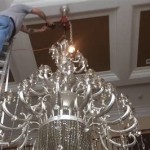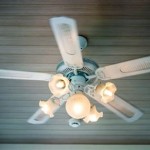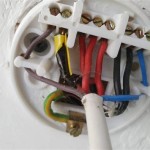Ceiling Recessed Light Insulation: A Comprehensive Guide
Ceiling recessed lights offer a sleek and sophisticated touch to any room. However, improper insulation can lead to energy loss, fire hazards, and other issues. This guide will explore the essential aspects of ceiling recessed light insulation, ensuring optimal performance and safety.
Why is Insulation Important?
Ceiling recessed lights generate heat, which can accumulate in the ceiling cavity. This heat can cause several problems:
- Increased energy consumption: Heat escaping into the attic raises the temperature, forcing the HVAC system to work harder, increasing energy bills.
- Fire hazard: Overheating can ignite combustible materials in the ceiling cavity, posing a fire risk.
- Moisture condensation: Heat can cause moisture to condense on the ceiling, leading to mold and mildew growth.
Types of Insulation
Various types of insulation can be used for ceiling recessed lights:
- Fiberglass batts and rolls: Affordable and easy to install, but less effective than other options.
- Foam insulation: More expensive but provides excellent insulation and air sealing.
- Cellulose insulation: Made from recycled paper, it is eco-friendly and provides good soundproofing.
Insulation Thickness
The thickness of the insulation is crucial for effective performance. The International Residential Code (IRC) recommends a minimum of R-30 insulation in ceilings. R-value measures the insulation's resistance to heat flow.
For recessed lights, it is recommended to install at least R-13 insulation around the fixture to prevent heat transfer. Additionally, you may need to add extra insulation to meet the overall ceiling insulation requirement.
Installation Techniques
Proper installation is essential to ensure the effectiveness of the insulation:
- Seal air gaps: Use caulk or foam sealant to fill any gaps between the light fixture and the ceiling.
- Cover the fixture housing: Place a layer of insulation over the fixture housing to prevent heat transfer.
- Install insulation around the fixture: Pack insulation tightly around the fixture to create a thermal barrier.
Fire Safety
Fire safety is paramount when dealing with recessed lighting. Follow these guidelines:
- Use IC-rated fixtures: These fixtures are designed for direct contact with insulation.
- Maintain clearances: Keep at least 3 inches of clearance between the insulation and the light bulb.
- Install smoke and carbon monoxide detectors: To alert you of any potential fire hazards.
Conclusion
Ceiling recessed light insulation is a critical aspect of ensuring the safety, efficiency, and longevity of your lighting system. By choosing the appropriate insulation type and thickness, installing it properly, and prioritizing fire safety, you can enjoy the benefits of recessed lighting without compromising other aspects of your home.

Recessed Lights Covered With Insulation Electrical Inspections Internachi Forum
A Never Worry Again Insulated Ceiling Jlc

Can I Cover Downlights With Insulation

How To Use Insulated Can Lights In Ceilings Diy

Ff130e Attic Recessed Light Stop Cover Tenmat Usa

Home Recessed Light Cover Covers

Can I Cover Downlights With Insulation

Install Recessed Lighting In Your Home Office

Halo H995 4 In Aluminum Led Recessed Lighting Housing For New Construction Ceiling T24 Insulation Contact Air Tite H995icat The Home Depot

Downlights And Recessed Lights Smarter Homes
Related Posts








